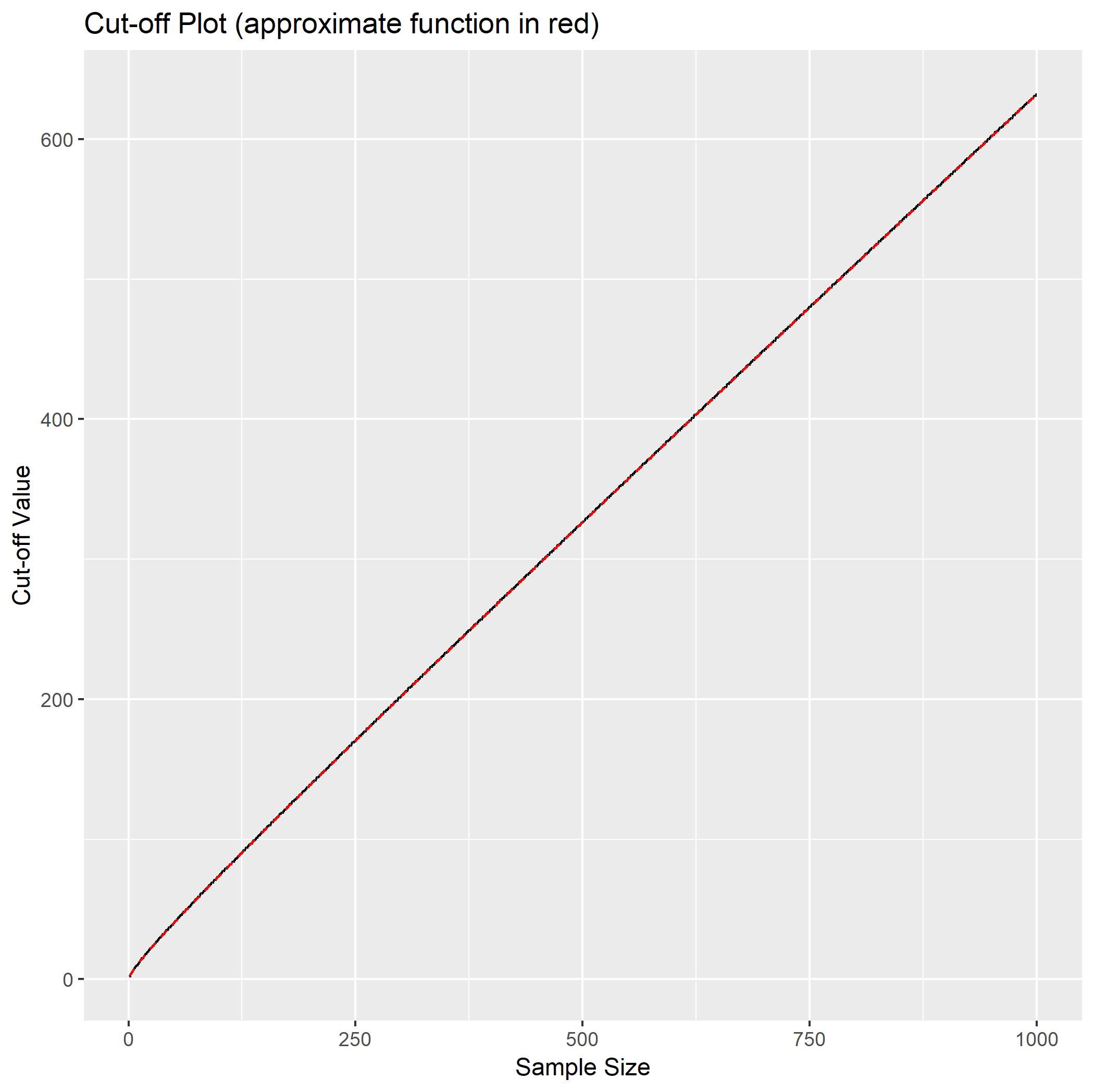Consider this question,
Suppose $X_1, X_2, . . . , X_n$ is a random sample from an exponential distribution with mean $\lambda$. Assume that the observed data is available on $[X_1], . . . , [X_n]$, instead of $X_1, . . . , X_n$, where $[x]$ denotes the largest integer less than or equal to $x$. Consider a test for $H_0 : \lambda = 1$ vs $H_1 : \lambda > 1$ which rejects $H_0$ when $\displaystyle\sum_{i=1}^n [X_i ] > c_n$. Given $\alpha \in (0, 1)$, obtain values of $c_n$ such that the size of the test converges to $\alpha$ as $n \to \infty$.
I have been able to figure out that $[X_i]$ will follow geometric distribution with parameter $(1 - e^{-\frac{1}{\lambda}})$ and will take values $0,1,2,...$. As a result, $\displaystyle\sum_{i=1}^n [X_i ]$ being the sum of $n$ geometric random variables, will follow Negative binomial Distribution. Now the point I am stuck at is the calculation of $c_n$. I tried solving for it using various approaches (CLT for instance), but I was not convinced by my answers.
How do I solve this problem?
Edit: I am including here what I did using CLT
$\displaystyle \lim_{n\to\infty}P\left( \sum_{i=1}^n [X_i ] > c_n | H_0\right) \to \alpha$
$\displaystyle \lim_{n\to\infty}P\left( \frac{\sum_{i=1}^n [X_i ]}{n} > \frac{c_n}{n} | H_0\right) \to \alpha$
$\displaystyle \lim_{n\to\infty}P\left( \frac{\sum_{i=1}^n [X_i ]}{n} - \frac{e^{-1}}{1-e^{-1}}> \frac{c_n}{n} - \frac{e^{-1}}{1-e^{-1}}\right) \to \alpha$
$\displaystyle \lim_{n\to\infty}P\left( \frac{\frac{\sum_{i=1}^n [X_i ]}{n} - \frac{e^{-1}}{1-e^{-1}}}{\left(\frac{e^{-1}}{n(1-e^{-1})^2}\right)^\frac{1}{2}}> \frac{\frac{c_n}{n} - \frac{e^{-1}}{1-e^{-1}}}{\left(\frac{e^{-1}}{n(1-e^{-1})^2}\right)^\frac{1}{2}}\right) \to \alpha$
Using CLT,
$1 - \Phi\left( \dfrac{\frac{c_n}{n} - \frac{e^{-1}}{1-e^{-1}}}{\left(\frac{e^{-1}}{n(1-e^{-1})^2}\right)^\frac{1}{2}} \right) = \alpha$
$\Phi \left( \dfrac{c_n(1 - e^{-1}) - ne^{-1}}{\sqrt ne^{\frac{-1}{2}}}\right) = 1 - \alpha$
Let $Z_\alpha$ be such that $\Phi(Z_\alpha) = 1 - \alpha$, then
$\dfrac{c_n(1 - e^{-1}) - ne^{-1}}{\sqrt ne^{\frac{-1}{2}}} = Z_\alpha$, and then the equation is solved for $c_n$.


